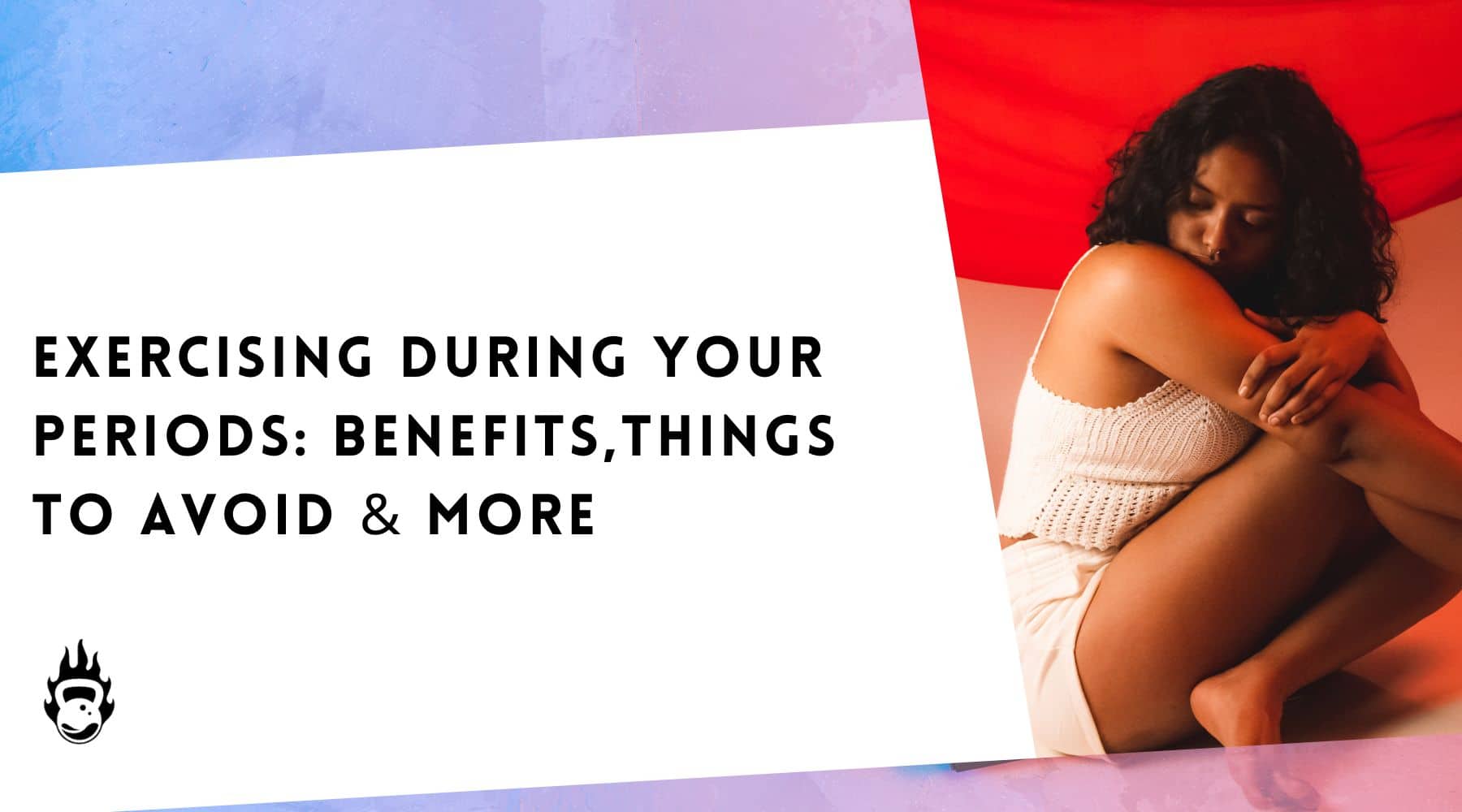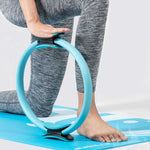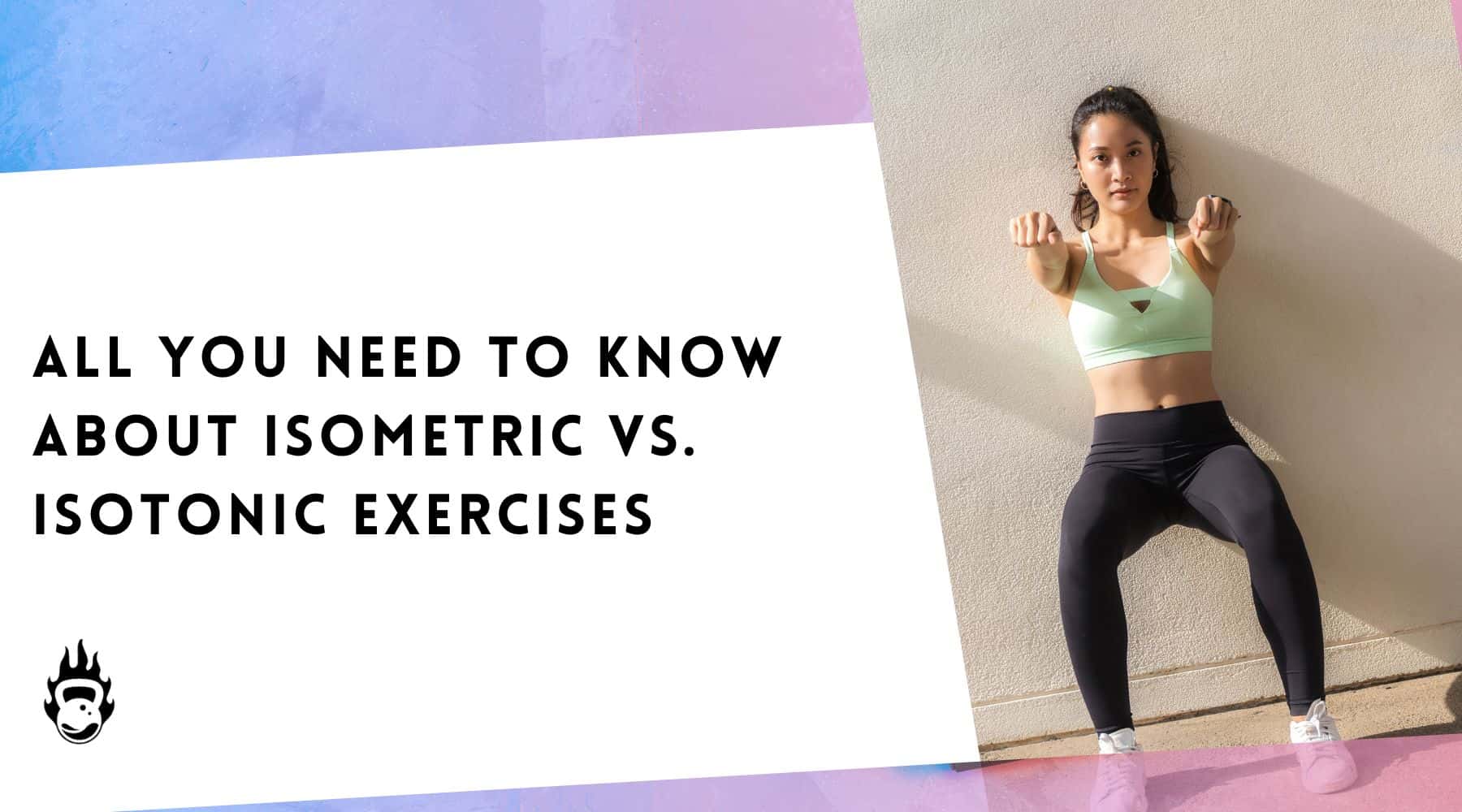Exercising During Your Periods: Benefits, Things To Avoid & More

Are you one of those women who just want to curl up in bed with a hot water bag on your tummy during your period?
Picking up those dumbbells or running on the treadmill is probably the last thing on your mind!
But what if we told you that exercise during periods could actually give you some much-needed relief from all those super annoying menstrual symptoms? Nope, we’re not kidding!
Exercising on your period can help reduce bloating, get rid of cramps, and even put you in a better mood.
In this blog, we’ll delve into the topic of period and fitness where we explore a few of the best and safest exercises to do during your period, the benefits of exercise during periods, and the do’s and don’ts of exercise during periods.
Let’s ‘go with the flow!’
Can you exercise during your periods?
Yes, you can exercise during periods.
In fact, there is plenty of evidence to suggest that physical activity is good for you especially when ‘Aunt Flo’ comes knocking. However, the type and intensity of exercise you choose to do might vary based on how you're feeling and what your body is comfortable with.
Benefits of exercising during your period
1. Pain relief
As you know, exercise triggers the release of endorphins that can not only make your mood go from crappy to happy but also act as natural pain relievers. So exercise during your periods and say goodbye to menstrual cramps!
Research even shows that women who worked out for 30 minutes, 3 days per week, for 8 weeks experienced reduced menstrual pain than those who didn’t exercise.
2. Reduced Bloating
Exercise during periods also improves circulation and lymphatic drainage. This in turn helps to reduce water retention and bloating that mostly accompanies menstruation.
3. Decreased fatigue
During your periods, your estrogen, progesterone, and other hormones keep fluctuating which can cause lethargy. But when you exercise during periods, it can cause your energy levels to spike due to the increasing blood flow and oxygen delivery to your muscles and brain.
4. Better Sleep
Since hormonal fluctuations can lead to disturbed sleep, exercise during periods can help counteract that by regulating your sleep pattern.

5. Better strength gains
Turns out your low level of female hormones during your periods can be a good thing if you want to see some gains in the weight room.
Research shows that women who strength-trained during the initial 2 weeks of their menstrual cycle had greater gains in strength and power than those who trained in the last 2 weeks of their cycle.
6. Body Temperature Regulation
Some women experience temperature fluctuations during their period. Exercise can help regulate body temperature and ease any discomfort associated with overheating.
5 Best exercises to do on your period
1. Walking
Walking is one of the best exercises for menstrual cycle.
Here’s why.
- It is a low-impact exercise and hence can be done on all days of your period.
- It’s a great exercise to keep you moving without putting too much strain on your muscles.
- It helps improve blood circulation which can help reduce bloating and water retention.
- It keeps those painful cramps at bay, reduces your stress, and puts you in a better mood by releasing endorphins.
You might like: Top 25 Female Fitness Quotes
2. Yoga
Next on the list of best exercises for menstrual cycle is yoga.

Science even suggests that women who practice yoga regularly have fewer premenstrual symptoms and milder menstrual pain! (Time to switch that hot water bag for a yoga mat, eh?)
Let’s take a look at a few different types of yoga you can practice during your periods.
a. Restorative Yoga
Restorative yoga involves holding poses for extended periods with the support of props such as bolsters, blankets, and cushions. This practice encourages deep relaxation and helps release tension in the body.
b. Yin Yoga
Yin yoga focuses on holding poses for longer durations to target deeper connective tissues. It can be a calming and gentle practice that promotes flexibility and relaxation.
c. Gentle Hatha Yoga
Hatha yoga emphasizes slow, gentle movements and can help alleviate discomfort and tension.
d. Pranayama
Incorporating deep breathing exercises can help calm your nervous system and alleviate stress and discomfort.
Here are a few yoga poses you can try out during your periods.
a. Child's Pose
This is a resting pose that stretches your lower back and helps release tension in your hips and abdomen.
b. Cat-Cow Stretch
This dynamic movement gently massages your spine and abdominal area, promoting flexibility and relaxation.
c. Supine Twist
This twist helps release tension in your back and can be soothing for cramps.
d. Bound Angle pose
This pose gently opens the hips and groin area, which can help relieve tension and discomfort in those areas.
e. Supine Butterfly Pose
This is an excellent yoga pose to open up your hips and groin area.
Give this yoga routine a try during your periods:
3. Light Strength Training
Another safe exercise during periods is light strength training.

As mentioned earlier, since there is scope for getting bigger strength gains during the bleeding (days 1-7) and follicular phase (days 8-14) of your menstrual cycle, there is no reason why you should skip lifting weights during this time.
Just make sure you stick to low-volume strength training to prevent the worsening of period symptoms and maximize your potential gains.
A few strength training moves that you can incorporate into your routine are squats, lunges, dumbbell/resistance band rows, bicep curls, etc.
You might like: A Guide To Resistance Band Exercises - Legs, Abs, Arms, Shoulders & More
4. Pilates
Next on the list of best exercises during menstrual cycle is Pilates.
Here’s why you should consider doing Pilates during your period.
a. Reduce Inflammation
Excess inflammation in your lower abdomen or uterus can cause your womb to secrete large levels of prostaglandins that in turn lead to stronger uterine contractions and thus more pain. Research shows that Pilates can help to reduce inflammation and prostaglandin levels thus reducing menstrual pain.
b. Gentle Movement
Many Pilates exercises involve controlled, fluid movements that can help alleviate muscle tension and discomfort, particularly in the lower back and pelvic area.
c. Mind-Body Connection
Pilates encourages mindfulness and body awareness, helping you connect with your body and manage any mood changes or emotional stress associated with your period.
A few of the best Pilates moves to try during your period include Pilates lunges, Pilates seated side bends, rolling down the wall, etc.
Here’s a Pilates exercise routine you can try during your periods:
5. Light cardio exercise
Light cardio exercises are one of the best exercises during periods to increase blood flow, lower discomfort, and boost energy levels.
Here’s why you should do light cardio exercises during periods:
- It helps increase blood flow throughout your body, including the pelvic region which helps alleviate menstrual discomfort and reduce bloating.
- It increases oxygen delivery to your muscles and brain, leading to improved energy levels and reduced feelings of fatigue.
- It can promote healthy digestion and alleviate any gastrointestinal discomfort that might accompany your period.
Examples of a few light cardio exercises that you can do during periods include low-impact aerobics, exercising on the elliptical trainer, dancing, stair climbing, etc.
Things to avoid while exercising on your period
Here are a few dos and don’ts of exercise during periods.
- Avoid intense, high-impact exercises including HIIT, jump rope, or vigorous running that could exacerbate discomfort or increase the risk of injury.
- If you plan on doing a strength training session, avoid lifting very heavy weights or doing more than half an hour sessions.
- Listen to your body and avoid doing any particular exercise or movement that increases discomfort. For instance, if you’re experiencing pelvic pain, avoid exercises such as crunches and squats.
- Avoid yoga poses that put you in an inverted position (think headstands, shoulder stands etc.) as these could disrupt the natural flow of menstrual blood. Inversions could also create increased pressure in the abdomen and pelvic region, which could worsen cramps, discomfort, or bloating.
- Avoid exercising on an empty stomach as this could lead to further fatigue and maybe even dizziness. Try eating a light snack around half an hour before your workout.
Conclusion
Don’t let ‘Aunt Flo’ put a damper on your workout plans! Just remember to take your exercise down a notch, whether that is light cardio, gentle weightlifting, or some relaxing yoga.
And if you need some workout gear to help you power through this time of the month, check out Burnlab’s collection right here.








Leave a comment